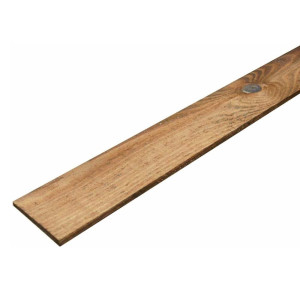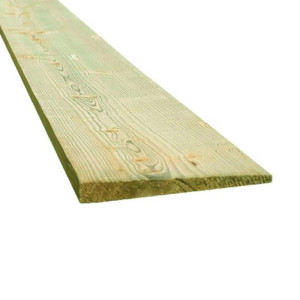Your Cart
x
Feather Edge Boards
Discover our curated selection of feather edge boards, an essential component for anyone looking to create or repair garden fencing. These timber boards, designed for durability and aesthetic appeal, are perfect for constructing sturdy, attractive fences that stand the test of time.
Chosen for their quality and resilience, our range caters to all your garden fencing needs, ensuring privacy and security in a style that complements your outdoor space. Explore our collection to find just the right timber solution for your fencing project.
Introducing the 0.9m x 125x22mm 2EX Feather Edge Board – the ideal solution for creating stylish and durable feather edge cladding. This high-quality, pressure-treated timber board offers an attractive appearance and ensures long-lasting performance, perfect for your fencing or cladding needs.
The ..
£0.99
Ex Tax:£0.83Introducing the 1.8m x 125x22mm 2EX Feather Edge Board – the ideal solution for creating stylish and durable feather edge cladding. This high-quality, pressure-treated timber board offers an attractive appearance and ensures long-lasting performance, perfect for your fencing or cladding needs.
The ..
£1.89
Ex Tax:£1.58Introducing the 1.65m x 125x22mm 2EX Feather Edge Board – the ideal solution for creating stylish and durable feather edge cladding. This high-quality, pressure-treated timber board offers an attractive appearance and ensures long-lasting performance, perfect for your fencing or cladding needs.
The..
£1.79
Ex Tax:£1.49Introducing the 1.5m x 125x22mm 2EX Feather Edge Board – the ideal solution for creating stylish and durable feather edge cladding. This high-quality, pressure-treated timber board offers an attractive appearance and ensures long-lasting performance, perfect for your fencing or cladding needs.
The ..
£1.59
Ex Tax:£1.33Introducing the 0.9m x 125x22mm 2EX Feather Edge Board – the ideal solution for creating stylish and durable feather edge cladding. This high-quality, pressure-treated timber board offers an attractive appearance and ensures long-lasting performance, perfect for your fencing or cladding needs.
The ..
£0.99
Ex Tax:£0.83Introducing the 2.1m x 125x22mm 2EX Feather Edge Board – the ideal solution for creating stylish and durable feather edge cladding. This high-quality, pressure-treated timber board offers an attractive appearance and ensures long-lasting performance, perfect for your fencing or cladding needs.
The ..
£2.19
Ex Tax:£1.83Introducing the 2.1m x 125x22mm 2EX Feather Edge Board – the ideal solution for creating stylish and durable feather edge cladding. This high-quality, pressure-treated timber board offers an attractive appearance and ensures long-lasting performance, perfect for your fencing or cladding needs.
The ..
£2.19
Ex Tax:£1.83Introducing the 1.8m x 125x22mm 2EX Feather Edge Board – the ideal solution for creating stylish and durable feather edge cladding. This high-quality, pressure-treated timber board offers an attractive appearance and ensures long-lasting performance, perfect for your fencing or cladding needs.
The ..
£1.89
Ex Tax:£1.58Introducing the 1.2m x 125x22mm 2EX Feather Edge Board – the ideal solution for creating stylish and durable feather edge cladding. This high-quality, pressure-treated timber board offers an attractive appearance and ensures long-lasting performance, perfect for your fencing or cladding needs.
The ..
£1.29
Ex Tax:£1.08Introducing the 1.5m x 125x22mm 2EX Feather Edge Board – the ideal solution for creating stylish and durable feather edge cladding. This high-quality, pressure-treated timber board offers an attractive appearance and ensures long-lasting performance, perfect for your fencing or cladding needs.
The ..
£1.59
Ex Tax:£1.33Introducing the 1.65m x 125x22mm 2EX Feather Edge Board – the ideal solution for creating stylish and durable feather edge cladding. This high-quality, pressure-treated timber board offers an attractive appearance and ensures long-lasting performance, perfect for your fencing or cladding needs.
The..
£1.79
Ex Tax:£1.49Introducing the 1.2m x 125x22mm 2EX Feather Edge Board – the ideal solution for creating stylish and durable feather edge cladding. This high-quality, pressure-treated timber board offers an attractive appearance and ensures long-lasting performance, perfect for your fencing or cladding needs.
The ..
£1.29
Ex Tax:£1.08Showing 1 to 12 of 12 (1 Pages)


